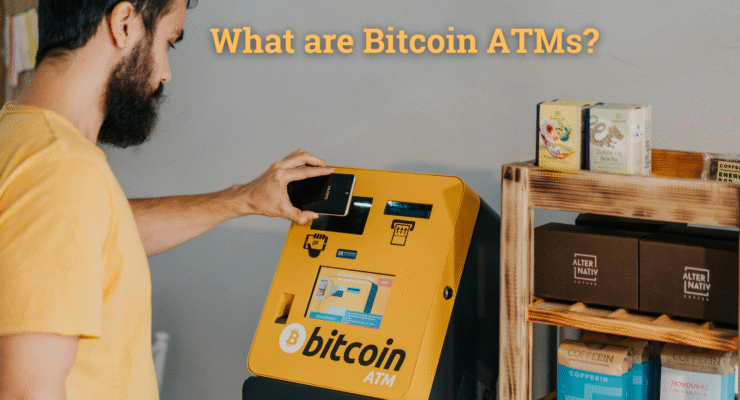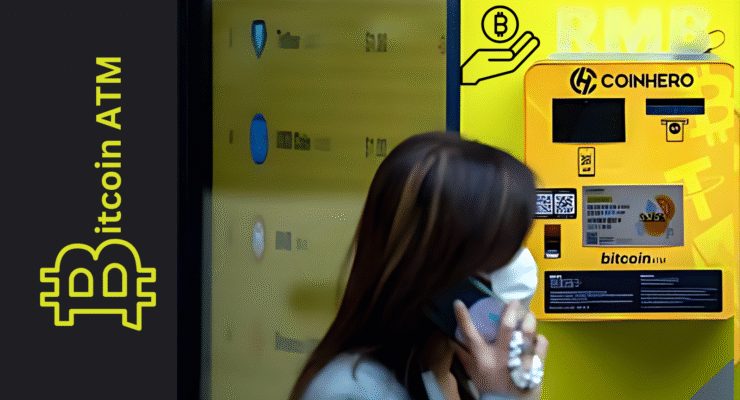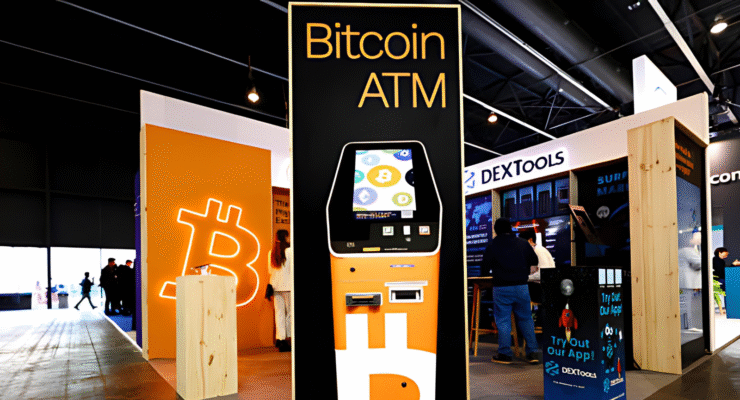Bitcoin ATMs are becoming an increasingly popular way for people to buy and sell Bitcoin and other cryptocurrencies. These machines function similarly to traditional ATMs but allow users to exchange cash for cryptocurrency or vice versa.
If you’re interested in using a Bitcoin ATM or learning more about how they work, this guide breaks down everything you need to know.
What is a Bitcoin ATM?

A Bitcoin ATM (also known as a BTM) is a physical kiosk that allows users to exchange traditional currency (like USD, EUR, etc.) for Bitcoin or other cryptocurrencies, or sometimes to withdraw cash in exchange for crypto. Unlike a regular ATM, which connects to your bank account, Bitcoin ATMs are connected to the blockchain network, allowing transactions to occur instantly.
Key Features:
- Buy Bitcoin: Deposit cash and receive Bitcoin in your digital wallet.
- Sell Bitcoin: Withdraw cash in exchange for Bitcoin or other cryptocurrencies.
- Non-custodial: Users maintain control over their funds during transactions.
How Do Bitcoin ATMs Work?
Bitcoin ATMs operate by connecting to the blockchain network:
- Locate a Bitcoin ATM: Use online maps or apps to find nearby Bitcoin ATMs.
- Verify Identity: Some machines require ID verification (KYC), especially for large transactions.
- Deposit Cash or Crypto: Insert cash to buy Bitcoin or scan a QR code from your wallet to sell.
- Transaction Confirmation: Once confirmed, the machine sends the Bitcoin to your wallet or dispenses cash.
Types of Transactions:
- Buy Crypto: Deposit cash and send crypto to your wallet.
- Sell Crypto: Transfer Bitcoin to the ATM and receive cash.

Where Can You Find Bitcoin ATMs?
Bitcoin ATMs are available in many major cities worldwide. However, the availability varies depending on your location. You may find them here:
- Shopping centers
- Gas stations
- Convenience stores
- Bars and cafes
- Dedicated cryptocurrency kiosks
You can use online directories like CoinATMRadar to locate Bitcoin ATMs near you.
Fees for Using Bitcoin ATMs?
Fees can range from 5% to 10% depending on the machine, location, and the type of transaction (buying or selling). Factors that influence fees include:
- Transaction size: Larger transactions may have different fees.
- Currency exchange: Some ATMs may offer more favorable rates than others.
- Additional services: ID verification or other added services might incur extra fees.
It’s always a good idea to check the fees on the screen before completing a transaction.
Are Bitcoin ATMs Safe to Use?
Bitcoin ATMs can be safe, but like any financial service, caution is essential. You should keep in mind some tips given below:
- Avoid Public Wi-Fi: Always use secure, private internet connections when making transactions.
- Know Your Limits: Some Bitcoin ATMs impose daily limits on transactions. Make sure you’re aware of these to avoid unexpected issues.
- Choose Trusted Locations: Look for Bitcoin ATMs at reputable locations like established businesses.
- Be Cautious with ID Verification: Not all Bitcoin ATMs require identity verification, but if you’re asked, ensure the machine is trustworthy.
Buying a Bitcoin using a Bitcoin ATM
Using a Bitcoin ATM to buy Bitcoin is straightforward. Here’s how to do it:
- Find a Bitcoin ATM: Use an online tool or app to locate a nearby ATM.
- Select the buy option: Choose to buy crypto.
- Enter Amount: Decide how much Bitcoin you want to buy or how much cash you want to spend.
- Insert Cash: Place your cash into the machine.
- Scan Wallet QR Code: Scan the QR code from your Bitcoin wallet to receive your Bitcoin.
- Confirmation: Wait for the transaction to be confirmed, and the Bitcoin will appear in your wallet.
Selling Bitcoin using Bitcoin ATM
Selling Bitcoin at a Bitcoin ATM follows a similar process:
- Select “Sell Bitcoin”: Choose the sell option on the machine.
- Scan Wallet QR Code: The ATM will ask for your Bitcoin wallet’s QR code.
- Transfer Bitcoin: Send the desired amount of Bitcoin to the machine’s address.
- Receive Cash: Once the transaction is confirmed on the blockchain, the machine will dispense cash.
Note:
Some Bitcoin ATMs may require ID verification for selling Bitcoin, especially for larger amounts.
Advantages and Drawbacks of Bitcoin ATMs
Advantages:
- Convenience: Easy to access and use, especially in high-traffic areas.
- Instant Transactions: Bitcoin ATMs allow for quick transactions with minimal wait times.
- No Need for Bank Accounts: Users don’t need a traditional bank account to use Bitcoin ATMs.
Disadvantages:
- Higher Fees: Bitcoin ATMs typically charge higher fees compared to online exchanges.
- Limited Availability: Not all areas have Bitcoin ATMs, especially outside major cities.
- ID Verification: Some machines require ID verification, which could deter users who prefer privacy.
Conclusion
Bitcoin ATMs provide a convenient and accessible way to buy and sell Bitcoin and other cryptocurrencies. While they offer benefits like instant transactions and privacy, they also come with higher fees and limited availability. As the cryptocurrency ecosystem grows, Bitcoin ATMs will likely continue to play a crucial role in providing easy access to digital assets for users worldwide.





